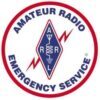KNW-136
ORGANIZE RADIO PROGRAMMED MEMORIES
From a Cook County ARES training article 01/26/2011 by Neil R. Ormos
Modified and adapted on 12/2020 by Earl Pack, AE5PA.
Over the years, amateur operators will generally acquire multiple radios as the operator works various roles in emergency communications and public service event activities and sees the need for different radios with different capabilities for these various activities. Typically these radios are multi-band rigs with frequency capabilities in the VHF and UHF bands. It is not unusual to have a base station, a mobile radio in one or more vehicles, and a few HTs of various makes and models. With different rigs having different capabilities and memory availability, programming all of those rigs can be challenging.
Following are some suggestions for managing programmed memory channels to maximize your readiness and versatility in emergency communication and public service events.
BANKS: Allocate memory channels you are most likely to use in emergency communication responses and public service activities into ‘banks’ according to your served agency and/or public service activities. For example, program your local, most used frequencies into 1-9, agency A in memory locations 10-19, agency B in locations 20-29, bike ride ‘x’ in 30-39, run ‘y’ in 40-49, etc. Some agencies and many events use common frequencies so this may mean you have duplication of channels but the convenience and speed of access could make this a smart plan. Radios today generally have hundreds of memory channels so this is not a problem.
CONTINUOUS PROGRAMMING: In this system you program from the lowest usable channel frequency to the highest so that no matter where you go you can access the local repeater. Along the way you can set up tones for local repeater operation and also duplicates of the same frequency with different access tones, e.g. 146.720/100.0 and 146.720/162.2 for local repeaters. In this system, you have to set tones manually for repeaters out of your pre-programmed area as needed.
In either system, you should have a chart or spreadsheet that lists your channel assignments for easy reference and quick channel acquisition.
Other points to consider:
- If you have APRS capability, program in the digipeater frequency.
- If you have Winlink capability, program in the various packet station frequencies you may be called upon to utilize.
- Allocate memory locations for public service, impromptu, or temporary activities.
- Reserve the lower-numbered channels for your most often used/most important channels so that they will fit in those cheap HTs with small memory banks when programmed from a spreadsheet driven programmer.
- Once you have this planned out, program all of your radios the same way. This way you only have to remember one channel plan for all of your radios.
- Having compact groups that are well organized and programmed the same way in all of your radios makes it easy for you to find what you need quickly regardless of the rig your using and making a switch to a backup rig seamless in an emergency.
- Use our ICS-205 and ICS-217 forms for organizing channels for events and emergency situations.
The Harris County ARES web site has a “Frequencies” link at the top of the screen. This link takes you to:
- Regional HF Nets
- Local Nets
- Frequencies used by the units for weekly nets and in the event of a deployment.
- Two meter repeaters within 100 miles or so of Houston
- All repeaters within 100 miles or so of Houston
- State HF Traffic Nets, RACES & EmComm frequencies
- Local Counties’ EOC & EmComm Net frequencies
- Local Clubs’ net frequencies.
That concludes tonight’s training. If there are any questions, comments or suggested additions to this material, come now?
Thanks, this is (callsign) clear to net control.
Send corrections, modifications, updates or suggestions to k5prs@aol.com
Edited 21 Sep 2025 by Paul Smith, k5prs
